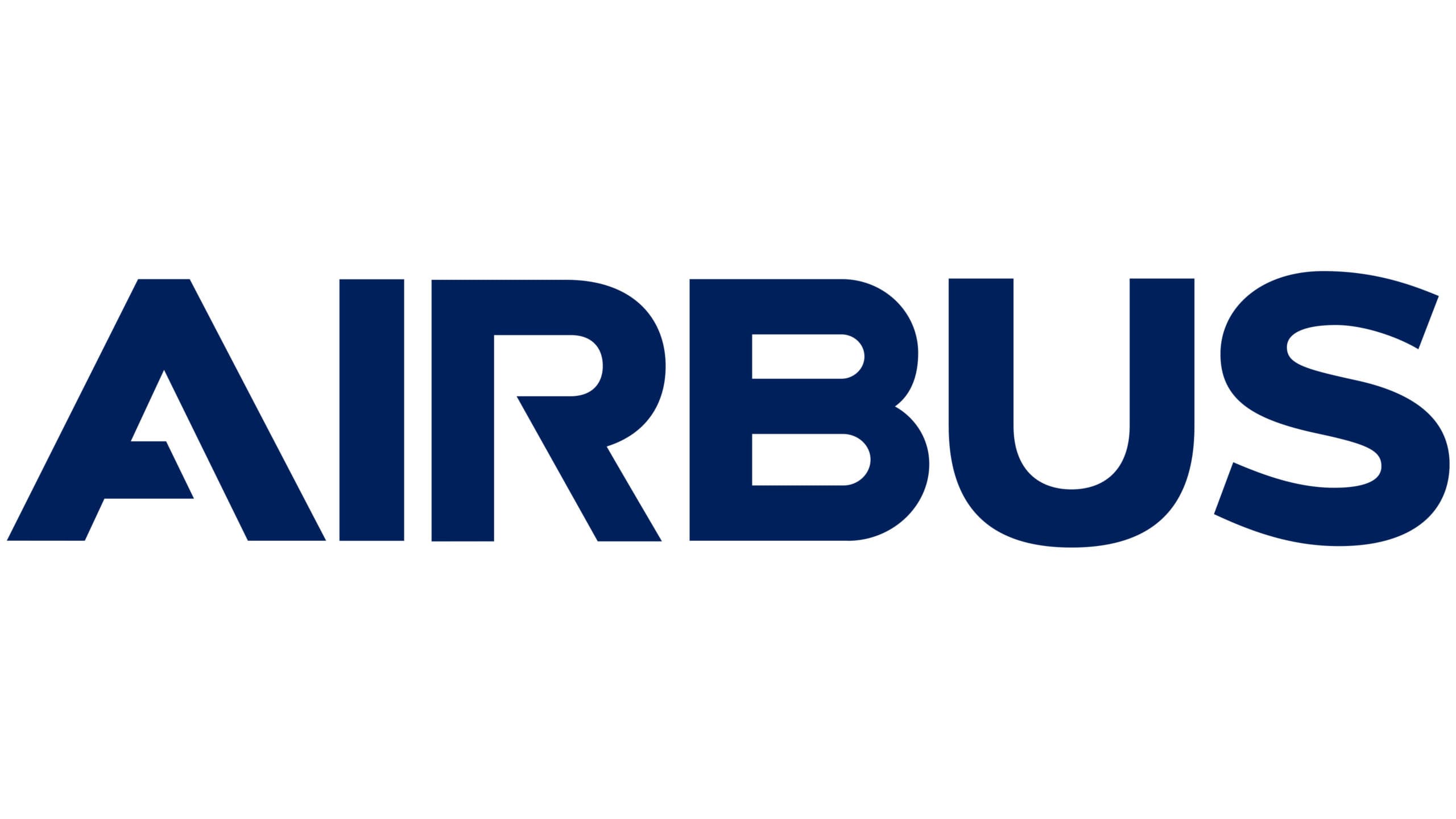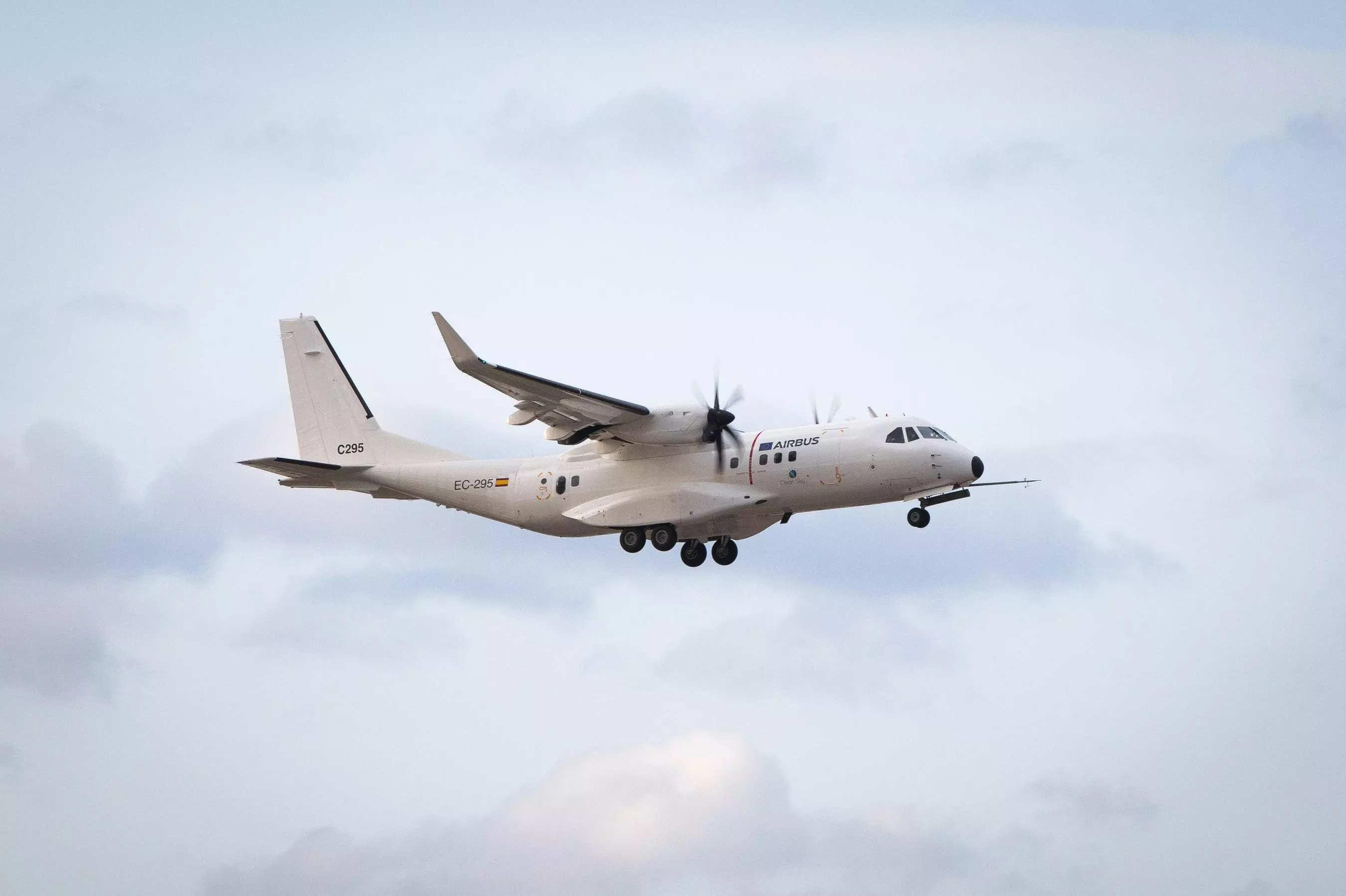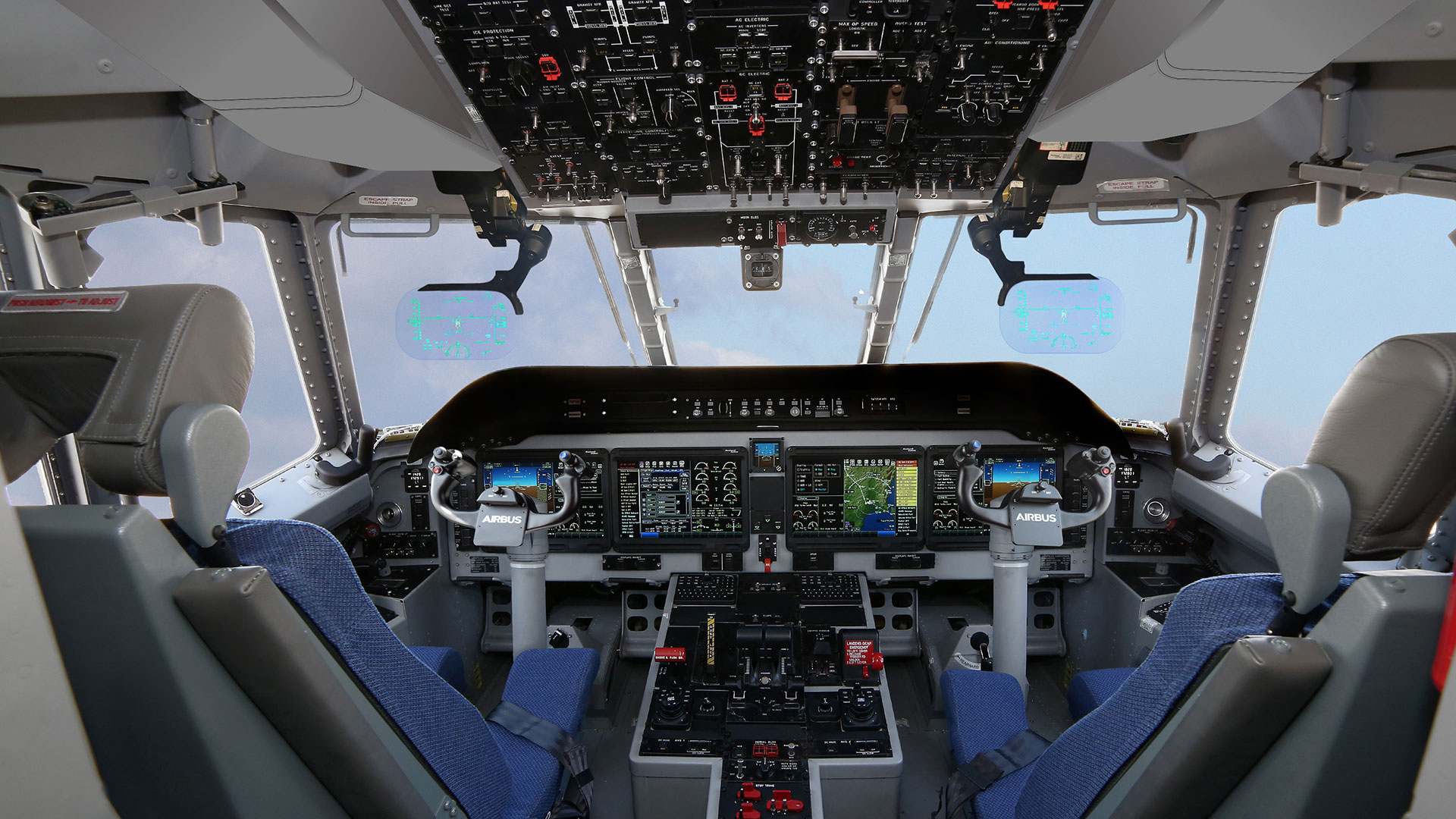Project
Clean Sky 2 - Next Generation Cockpit
Reducing pilot cognitive load through adaptive interface design for a potential civilian Airbus C295









Overview
The Clean Sky 2 project aimed to redesign the cockpit interface for the Airbus C295 military transport aircraft, creating an adaptive system that responds to different flight phases while reducing pilot cognitive load. This next-generation interface coordinates information across pilot and copilot displays while maintaining critical safety standards required for aviation systems.
Part of the Horizon2020 Clean Sky 2 programme, I took on the design challenge as part of the Almadesign team, as a critical to the international consortium.


The Challenge
Pilots experience high cognitive load managing multiple systems across different flight phases. Current cockpit displays show static information layouts regardless of flight context, meaning critical information can be buried when pilots need it most during high-workload phases:
- Static displays don't adapt to flight phase context
- Critical information remains hidden during high-workload moments requiring manual search and filtering
- Multi-screen coordination between pilot and copilot stations must maintain situational awareness
- All designs must meet stringent aviation safety standards and redundancy requirements
- Interface must support fail-safe operation while improving efficiency
My role focused on UX/UI design for an adaptive interface system that reorganizes information hierarchy based on operational context, reducing cognitive load without compromising safety.
My Approach
I collaborated closely with Airbus experts and aviation specialists to understand the unique constraints of cockpit interface design, where user experience must balance efficiency and fail-safe operation.
What I did:
- Conducted contextual research with aviation experts to understand workflow patterns across flight phases
- Mapped information hierarchy and priority shifts throughout different operational contexts
- Designed adaptive interface layouts that reorganize based on flight phase and system state
- Prototyped multi-screen coordination flows between pilot and copilot displays
- Iterated designs through VR-based validation with aviation specialists
- Developed CAD for a full scale mockup

Key Design Decisions
Adaptive Interface by Flight Phase
Issue: Pilots need different information priorities during taxi, takeoff, cruise, and landing phases, but traditional cockpit displays remain static, forcing pilots to mentally filter and search for relevant data during high-workload moments. Before pilots even board, flight infomation is contained in a "flight-bag" which is increasigly digital. As technology advabces, flight systems as lagging behind requiring manual synchronisation of data for briefings/boading/deboarding/debriefing. During takeoff, engine performance and obstacle clearance are critical; during cruise, fuel management and route monitoring take priority. A static interface makes pilots work harder to find context-relevant information.Response: Designed an adaptive interface system that automatically connect to the digital flight bag, reorganizes display hierarchy and information density based on the current flight phase. Critical data for each phase surfaces prominently, while less relevant information recedes or consolidates. The system recognizes five primary operational contexts (taxi, takeoff, cruise, approach/landing, emergency) and adjusts accordingly.
Key factor: By aligning the interface with natural pilot workflows and attention patterns during each phase, cognitive load is reduced and critical information is immediately accessible without manual navigation. Pilots spend less time searching and more time flying.

Multi-Screen Coordination
Issue: Pilot and copilot displays must work as a coordinated system, sharing situational awareness while allowing independent task management. Information shown on one screen affects what the other pilot needs to see. Without coordination, critical information can be duplicated unnecessarily or missed entirely if each pilot assumes the other is monitoring it.Response: Designed synchronized display coordination where key state information persists across both stations while allowing independent detail views. Visual indicators show what the other pilot is currently monitoring, preventing gaps in situational awareness. Shared critical alerts appear on both displays, while task-specific details can be independently accessed.
Key factor: Pilots maintain shared situational awareness without duplicate information cluttering limited screen space, while supporting independent task focus when needed. The system reduces miscommunication and ensures both pilots have access to critical information regardless of who initiated a particular task.

Flight Phase Adaptation
The interface adapts across five primary operational contexts, each with distinct information priorities and pilot workload characteristics:
Ground: Minimal information display focusing on navigation, ground coordination, and pre-flight checks. Reduces visual clutter during stationary and low-speed ground operations where attention is primarily outside the cockpit.
Takeoff: Critical engine and system monitoring, obstacle clearance data, and performance parameters. High information density during high-workload phase where split-second decisions matter.
Cruise: Fuel management, route monitoring, and system health overview. Balanced information load during lower-workload phase, optimizing for long-duration monitoring tasks.
Approach/Landing: Precision navigation, runway alignment, weather conditions, and approach procedure guidance. High-density critical information during complex final approach phases.
Emergency: Simplified interface highlighting affected systems, available redundancies, and critical action items. Dramatically reduced information load focusing attention on problem resolution.
Each phase automatically adjusts information density, hierarchy, and available controls to match pilot priorities and workload, reducing the need for manual interface reconfiguration during task transitions.

Expert Validation Process
Unlike consumer usability testing, aviation interface validation requires specialized evaluation methods. On-site at Airbus Getafe, a VR mockup was validated iteratively during development, in view of achieving a high standard for the physical mockup.
Trade-offs & Constraints
Aviation cockpit design operates under significant regulatory and technical constraints that shaped design decisions. Certain interface innovations required compromise to meet certification requirements—fully autonomous adaptation would be ideal, but pilots need predictable interface behavior they can override during emergencies. Some adaptive behaviors were simplified to ensure pilots always understand interface state. Working within existing hardware limitations meant some ideal solutions weren't technically feasible within the project timeline. Additionally, as part of a consortium, design iteration cycles were longer than typical software projects due to cross-organizational coordination and approval processes. Testing with actual pilots and flight simulators would have introduced scheduling constraints that extended timelines but could have provided invaluable validation.
Outcome
Recognition:
- Interface concepts validated by test pilots for reduced cognitive load during high-workload flight phases
- Design framework adopted for future cockpit development initiatives within the consortium
- Contributed to Clean Sky 2 research outcomes advancing next-generation aviation interface design
- Demonstrated feasibility of context-aware adaptive cockpit interfaces in safety-critical aviation systems
- Validated measurable reduction in pilot cognitive load during flight phase transitions
- Established design patterns for multi-screen coordination that balance situational awareness with independent task management
- Showed that intelligent interface adaptation can coexist with aviation safety requirements and predictability needs
- Provided foundation for next-generation cockpit development considering both pilot efficiency and regulatory compliance
Impact:
What I learned: This project deepened my understanding of designing for expert users in safety-critical environments where user experience must coexist with regulatory requirements. I learned to balance adaptive, intelligent interface behaviors with the predictability and consistency pilots need to build muscle memory and trust their instruments. Working with aviation experts taught me the importance of understanding not just user workflows, but the certification and failure-mode thinking that shapes every design decision in aerospace systems. The validation process showed me how expert evaluation differs from consumer usability testing—success isn't measured by ease of learning or subjective satisfaction, but by measurable performance under stress and demonstrable safety improvements. Finally, I learned that innovation in highly regulated domains requires patient iteration, collaboration, and willingness to compromise ideal solutions for certifiable, deployable outcomes.
Get in touch for more information or to book a consulation.
Contact MeMore
Project
Eviation Alice - Electric Commuter Aircraft
World's first fully electric commercial airliner with bespoke glass cockpit design
World's first fully electric commercial airliner with bespoke glass cockpit design
See Project


